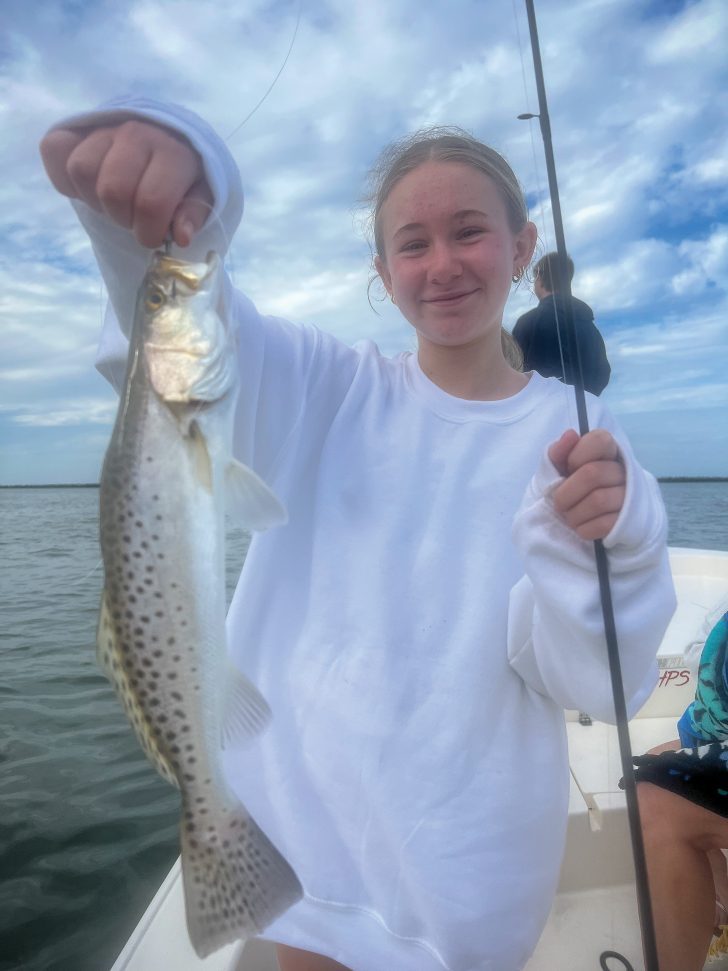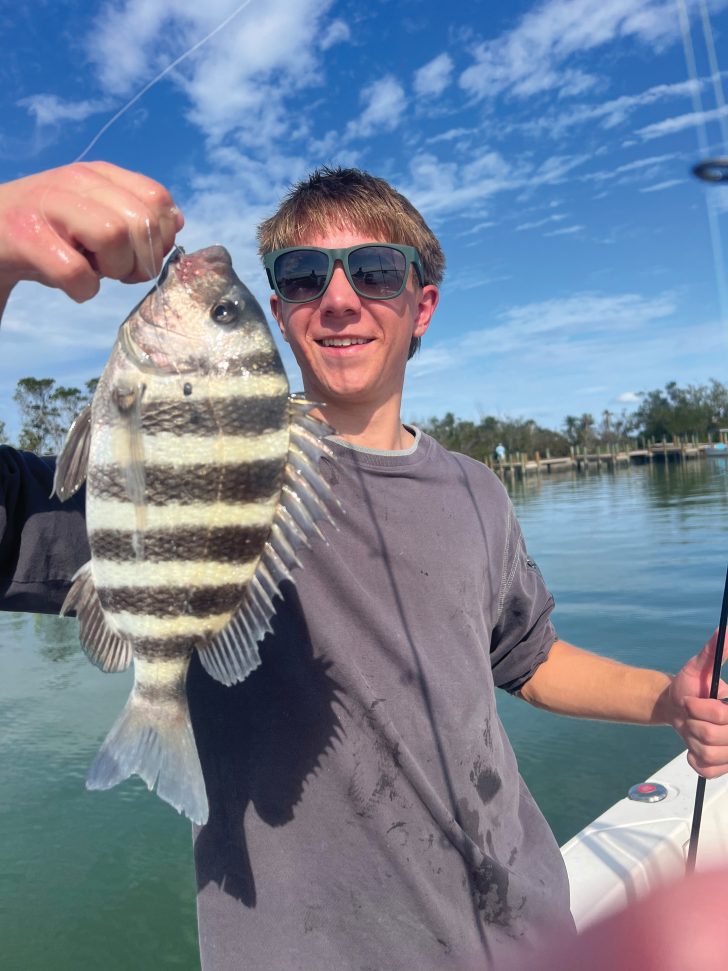By: Captain Terry Fisher
The month of February seems to solidify the arrival of more migratory species such as spanish mackerel, pompano, permit together with the favorite winter species; large sheepshead! Cooler water temperature dictates the species locations and eating demeanors during their winter ‘spawning activities’. February is definitely sheepshead month. While rumored to be difficult to catch, when they feed, they will virtually ‘catch’ themselves. However, at other times throughout the day, they will be very ‘picky’ and hard to hook. They will be found under docks, mangroves, along seawalls and just about anywhere except the grass flats. They like current flow on incoming and outgoing tides. Light tackle is the preferred method to fishing for them with small hooks, small weights on thirty (30) lb. fluorocarbon leaders.

Recognizing a sheepshead bite from the other fish is ‘key’ to understanding how and when to set the hook or when to move to another location in search of them, thus getting away from other small pesky fish such as pinfish and baby mangrove snappers. Hard hits are usually baby mangrove snappers and nibbles are usually pinfish. When these fish are biting, odds are the sheepshead are not eating or are not in that location. Light tugs or gentle pulls are sheepshead. They will swim with the bait to the left or right of the initial presentation location. Any of these events trigger the time to remove some of the slack in the line and set the hook. While fishing for sheepshead other species such as snook, redfish, black drum, jack crevalle and mangrove snapper will join the party.
My bait of choice for sheepshead is small shrimp or the tail of a larger shrimp. Some anglers swear by fiddler crabs, but I have good success with shrimps. They are easy to purchase, use and more cost effective. I also, recommend chumming diced up shrimps to incite more bites and to determine if the fish are there and active. I set my vessel up close to the site I am going to fish and use light equipment, such as a 7 foot, 8-17lb. test spinning rod and comparable size fitting spinning real. Lighter equipment is easier to fish close to and under structure while offering good action. Load the reel with 10-15lb. test line, attach a #1 or #2 sharp bait hook with a piece of shrimp below a small #5 or #6 pinch weight on a 30 lb. leader and you’re in business. The size of the weight should be just heavy enough to keep the shrimp presentation on or close to the bottom of the seabed. Too much weight will prevent one from seeing or feeling a slight tug or pull. February is one of the better months to fish docks, seawalls, and other structures to get in on this action.

Larger seatrout will be joining the smaller trout in the grass flats of 3-6 feet of water. All summer and winter we have been dealing with a lot of small trout, but February should offer some larger ones while working the grass flats. Use light tackle in order to enjoy catching them. Swim baits and top water lures, especially in the early morning hours, will deliver a lot of action during calm days. However, live shrimp, suspended under a popping cork will provide more fish. Spanish mackerel, pompano and lady fish will also join in on the fun while targeting the trout.
Offshore species such as groupers, snappers, permit and cobia will be migrating in the Gulf closer to the outer Islands. These fish will be closer in depths around 50ft.-80ft. due to cooler water temperatures. During the summer and fall months anglers could expect to fish in 100ft. to 150ft. of water. That’s a long way to go, but that’s life in Southwest Florida. Take advantage of the opportunities to fish for them in February without the burden of going 40-50 miles offshore. Medium to medium heavy equipment will get the job done. Take plenty of chum and take a variety of weight sizes to match the currents.
